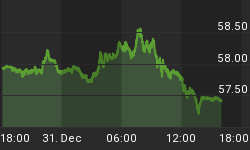Mainstream media and bloggers have noted the declining participation rate. Few provide much detail. Those who did provide detail, primarily looked at broad categories such as 16-19, 20-24, 25-54, and 55+.
There is plenty of ground between age 25 and 54. And what is happening at retirement age and beyond? Lumping everyone 55 and older into a single bucket is problematic.
I gave a call to the BLS and found a wealth of information on finer breakdowns that merits a closer look.
I passed the data on to reader Tim Wallace who produced the following charts.
Notes:
- Data is not seasonally adjusted.
- Comparison is August of 2013 to August in prior years.
- Some of the age groups do not have data for the early years. This explains sharp vertical lines for some years.
- These charts are for males. I will provide a look at female participation rates in a second post.
Male 16-29

Overall, this group is about 25% of the male population.
The decline in age group 16-17, 18-19, and 20-24 can be reasonably explained as an increasing number of kids going to college.
There is only a minor decline in the participation rate of those aged 25-29.
Male 30-49

Overall, this group is about 33.5% of the male population.
30-49 should be prime working years. Some people might be able to retire after 20 years of service, but that does not apply to anyone under the 40.
Some people may have dropped out of the labor force by going back to school, but disability fraud and welfare likely explains some if not most of this decline.
Male 50-64

Overall, this group is about 25% of the male population.
This is where the charts get interesting. At age 60-64 the participation rate ticks back up.
Fewer people are able to retire at age 60 than 20 years ago.
Fewer people are able to retire at age 62 than 10 years ago.
You can see this in the age of workers at many fast food restaurants.
Male 65+

Overall, this group is about 13% of the male population.
Men in all of these age groups are increasingly reluctant to retire, especially those aged 65-69.The participation rate in the 65-69 age group is up from 25% to about 38%.
Incentive For Fraud
I noted in detail how disability fraud works in States Have an Incentive to Promote (Not Stop) Disability Fraud; So How Much Fraud Is There?
As a followup, also see Want to Get on the Disability Gravy Train? There's an App For That!
















